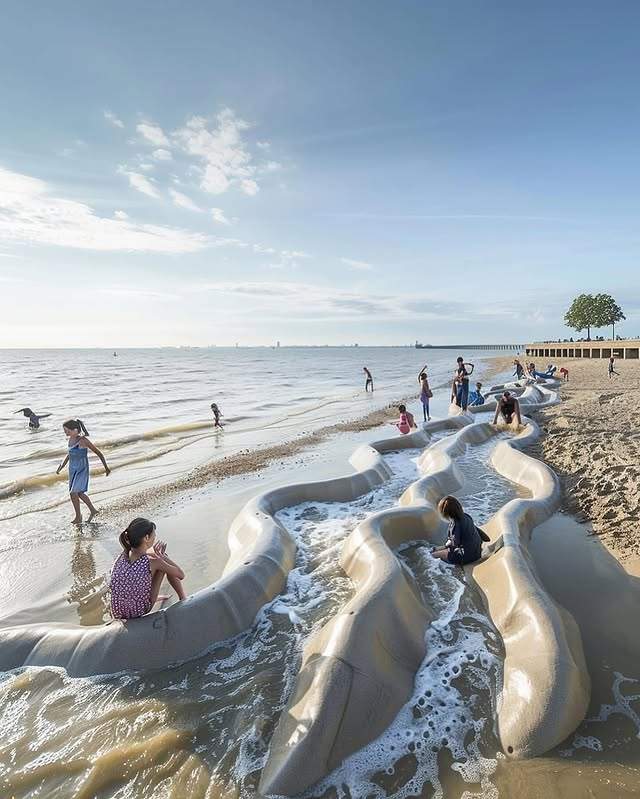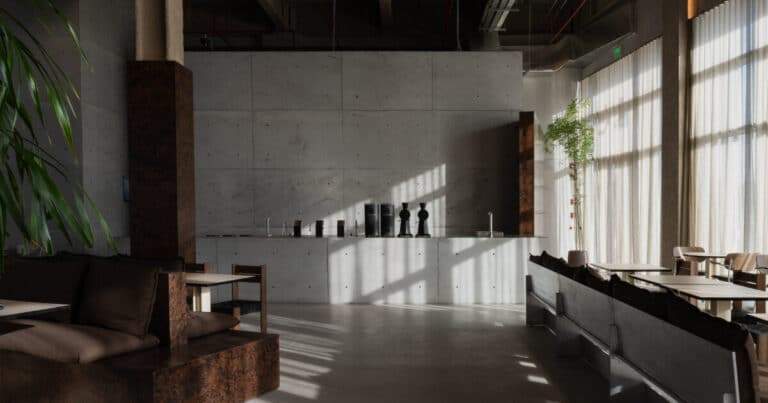Coastal Architecture in Spain: Balancing Nature and Leisure
Introduction
This article explores an architectural vision that harmonizes natural coastal elements with leisure spaces along Spain’s Mediterranean coast, maintaining a 50-50 balance between the two. The design integrates raw coastal textures (such as rocks and sand) with soft, adaptive structures that respond to seasonal changes, fostering a dialogue between land and sea. Key topics include sustainable material use, climate-responsive design, and the role of artificial intelligence in optimizing solutions. This approach is a prime example of coastal architecture.



1. The 50-50 Balance: Nature and Leisure
The core principle is creating spaces that equally prioritize natural beauty and modern recreational needs. This equilibrium is achieved through:
- Landscape Integration : Using natural slopes and rock formations as design foundations in coastal architecture.
- Functional Leisure Areas : Open seating zones and water features crafted from local materials.
Quote : “Sustainable design requires balancing natural resource use with quality of life improvements.” — United Nations Environment Programme (UNEP).

2. Coastal Materials: Embracing Raw Beauty
Local, natural materials define the aesthetic and functional aspects of the design in coastal architecture:
- Limestone : Used for walls and foundations due to its durability and natural colour harmony.
- Treated Wood : For outdoor furniture, resistant to humidity and corrosion.
Table: Material Comparison
| Material | Application | Benefits |
|---|---|---|
| Limestone | Walls, foundations | Durable, blends with nature |
| Treated Wood | Outdoor furniture | Weather-resistant |
| Local Sand | Flooring | Reduces heat reflection |
3. Adapting to Seasonal Changes
The architecture responds dynamically to seasonal shifts:
- Adjustable Openings : Wide windows for winter sunlight and summer ventilation, a key feature in coastal architecture.
- Modular Roofs : Protect spaces during stormy seasons while allowing airflow in calm weather.



4. Land-Sea Dialogue: Connecting Elements
Designs emphasize the relationship between coastal land and water, which is essential in coastal architecture:
- Curved Pathways : Mimic natural coastal contours, winding through rocky terrain.
- Tiered Levels : Link elevated seating areas to beachfront zones seamlessly.
Quote : “Successful design reflects the relationship between humans and their environment.” — UNESCO.
5. AI-Driven Design Solutions
Artificial intelligence tools optimise environmental and structural challenges in coastal architecture:
- Airflow Analysis : Shapes spaces to reduce energy consumption.
- Erosion Simulation : Selects materials resistant to coastal wear and tear.

Frequently Asked Questions (FAQ)
- How is the 50-50 balance achieved?
- Equal division of space and use of local materials for both natural and recreational areas.
- What materials are prioritized?
- Limestone, treated wood, and locally sourced sand.
- Are the designs eco-friendly?
- Yes, sustainable materials and energy-efficient strategies are prioritised.
- How do designs adapt to seasons?
- Through adjustable features like movable roofs and modular openings.
Summary Table: Key Points
| Topic | Details |
|---|---|
| Nature-Leisure Balance | 50% natural elements, 50% functional leisure spaces |
| Primary Materials | Limestone, treated wood, local sand |
| Seasonal Adaptation | Adjustable openings, tiered structures |
| Technology Used | AI for environmental simulations and optimization |
Conclusion
This architectural approach demonstrates how coastal spaces can honour natural landscapes while meeting human needs. By blending raw materials, adaptive design, and technology, these spaces offer immersive experiences that redefine humanity’s connection to the coast and showcase exemplary coastal architecture.







